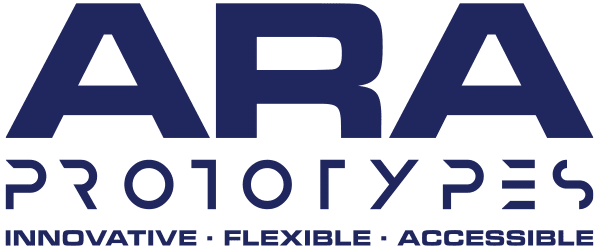Case Study
Exotic Jet Engine Intakes
How we used the latest techniques in additive manufacture to explore the boundaries of next generation passenger jet propulsion.
Most modern passenger jets have engines installed on pylons mounted below the wing – this has structural advantages and also ensures the air flowing into the engines is smooth and well behaved.

However, engine efficiency improves if the air entering the intake is slower and higher pressure. Aircraft designers are exploring the possibility of using air in the slow moving boundary layer right next to the aircraft fuselage skin to power a new type of engine configuration mounted on the aircraft tail. This has not been attempted before because it is a very difficult technical challenge (ingesting air from the boundary layer will make the engine inlet flow highly distorted which may cause the engine problems) and it is unclear whether the gain in efficiency will be sufficient to merit the increase in complexity and cost.
The SUBLIME project was setup to begin to answer some of these questions.
ARA developed advanced computational simulations and conducted a world first industrial wind tunnel test on a scale aircraft model to better understand the aerodynamics and potential benefits of these radical engine configurations.



The model aircraft engines used in the wind tunnel test were very complicated parts. One was for a single engine configuration and the other for a twin engine configuration. They had to measure the pressure field across the engine inlet using a large number of integrated Pitot tubes called a “rake” – and on the single engine configuration the part also had to create the flow through the engine using high pressure jets called an “ejector”. Manufacturing these parts using conventional machining techniques would have been difficult if not impossible due to very limited space. This is where additive manufacture proved its value.
Our design team designed the parts as single components with all of the dozens of pneumatic tubes for pressure measurement routing integrated into the structure – something only practical with additive manufacture:


Particular care had to be taken to ensure there would be sufficient material between the pneumatic tubes to minimise the chance of a breakthrough between pressure channels.
Then the parts were built using additive manufacture by one of our partners, APWorks, and precision machining at ARA’s manufacturing centre was then used to achieve the high tolerances needed for the interfaces prior to being assembled into the aircraft model by our fitting team.


During the SUBLIME project, ARA decided to trial a pioneering additive manufacture technique called WAAM or Wire Arc Additive Manufacturing for the aircraft model nose.
A near net shape of the nose was created using the WAAM technique by our partners at WAAM3D, building up from a cylindrical fixture which would be used to hold the part during later manufacture stages:

The precision machining capability at ARA’s manufacturing centre was then used to take the near net shape provided by WAAM3D and turn it into a finished nose component ready for installation on the aircraft model:


Engine components instrumented ready for use in the wind tunnel test:






Twin engine configuration installed in the ARA Transonic Wind Tunnel (TWT):

Single Engine Configuration installed in the ARA Transonic Wind Tunnel (TWT):



